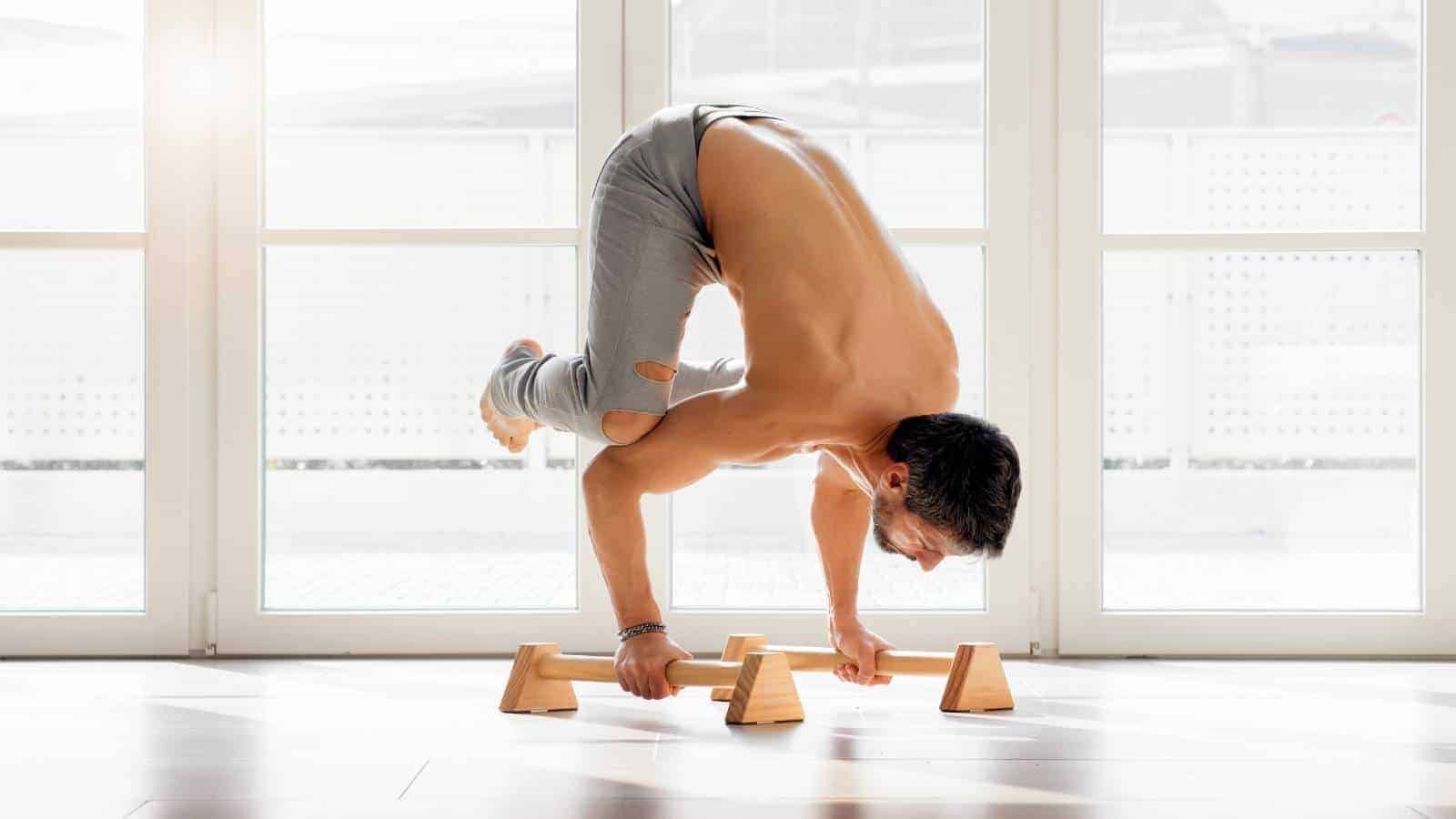At first glance, people think yoga and calisthenics are not a good match. Yoga looks so gentle, but calisthenics looks more intense. However, these two disciplines can complement each other, and by combining the two, one can grow in both practices.
To blend yoga and calisthenics, one can integrate workouts from each discipline into new routines. Both exercises depend upon strength and balance. Using yoga positions and gymnastics workouts can be a great mode of cross-training.
Calisthenics and Yoga
Calisthenics Worldwide defines calisthenics as a form of workout that uses your body’s weight to aid muscles and improve flexibility in a developmental way.
Calisthenics is often looked up without equipment, it goes well with yoga, which is done only using the body. If you’re still wonderstruck what calisthenics is, jumping jacks, lunges, using best parallettes, doing sit-ups, push-ups, squats, and various exercises that can be accomplished without gym equipment can come to mind.
Compared to yoga, calisthenics can be extra active and intense of the two exercises.
Those who have practiced the Calisthenics program for a lengthy time can pull off intense exercises that depend upon incredible strength, body awareness and balance.
It may include a human flag, wherein a person holds a vertical pole and holds it at a 90-degree angle to the pole as if it were a waving flag.
If gymnastics is your elementary practice, assembling yoga poses into your routine provides many opportunities to work on the body awareness and tension needed for progressive calisthenics poses.
It also provides a proactive way if you are a yogi first, you can incorporate some calisthenics into your practice to build greater strength.
Bringing Both Together
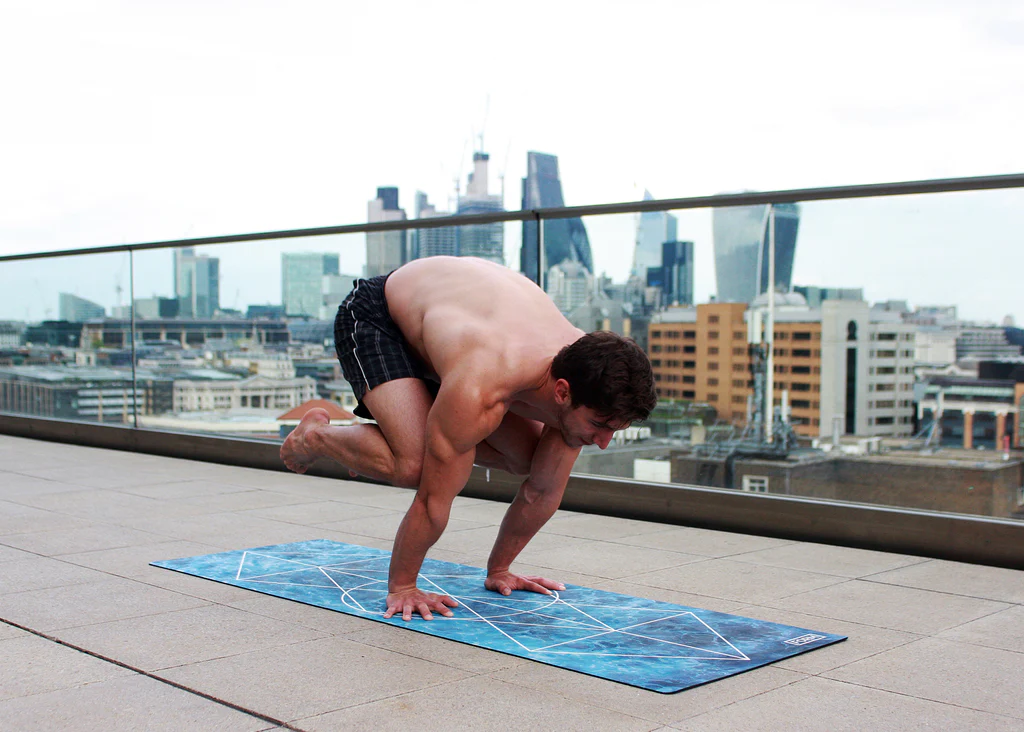
Combining these two practices is the perfect addition to your fitness routine as you work on the unique benefit of calisthenics and yoga.
For starters, here are some nice combinations of traditional yoga poses and classic gymnastic exercises. Start with some reachable beginner combinations and struggle your way up to more advanced and challenging poses.
You can use more cutting-edge poses as goals that you can work on with patience over time.
Warrior poses and lunges
Incorporating lunges into your habit of various warrior poses is a considerable way to add a little added fire and burn your pace on the mat. Let’s see how to get started with the first combo.
Warrior I or Virabhadrasana I
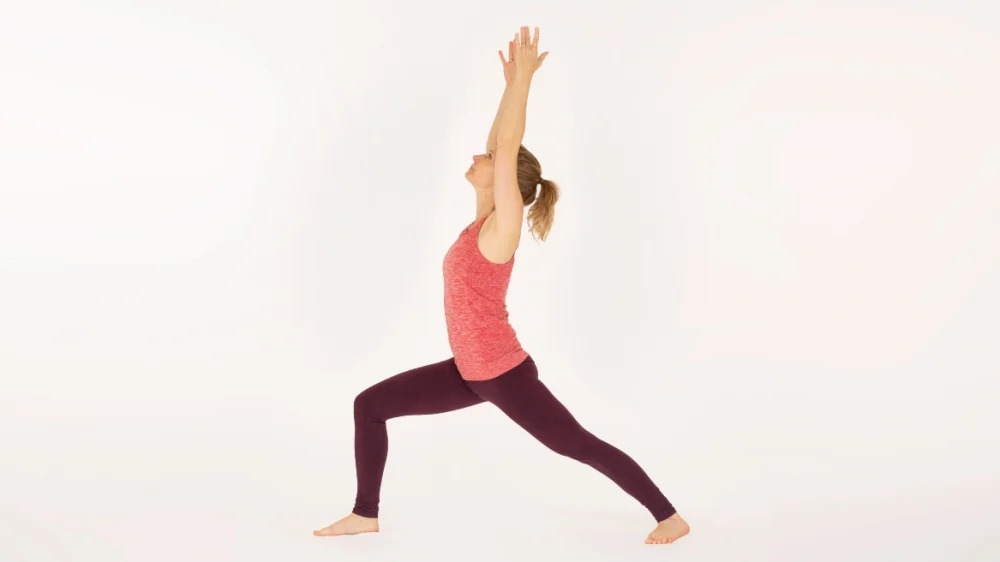
To move to this position, stand up and face the front of the mat. From hither, step your right foot back and place your foot at a 45-degree angle to him.
Bend your front leg at your knee to 90 degrees while keeping your back leg straight, so your knee is placed over your ankle. Once your feet are properly positioned, check with your hips.
Remember you should be facing forward so that both points on your hips radiate toward the front of the mat. Take a deep breath here and raise your arms overhead as you inhale.
Look up at the sky and take a deep breath. You are now in the first position in the series Warrior.
This pose is very beneficial as it affects many areas of the body at once. It gives you an opportunity to stretch your chest and lungs while working your legs, arms and shoulders.
While practicing various warrior poses, you may remember practicing poses designed to fight self-ignorant opponents.
Lunges
It’s time to introduce calisthenics. From the Warrior I position, one can easily transition to a typical lunge. Keep your front leg in an ongoing position, face forward and bend your knee.
Adjust your back leg slightly and rotate it so that your foot is facing forward. Your feet must be in alignment with your hips. That is, they should never be on the same line.
You can place your hands on your hips or place weights on your sides.
To perform a lunge, you wish to incorporate several movements. From this position, lower your back knee toward the mat and tuck the toes of the back foot down.
From here, straighten your legs and return to standing. To repeat this movement, bend your knees, lower them, and then bring them back up. Repeat several times on either side of the body.
Warrior II or Virabhadrasana II
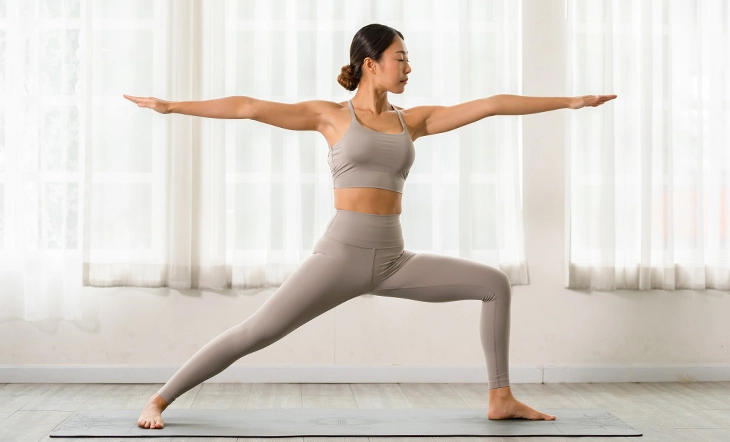
Once the lunge is complete, you can return to the warrior pose for the second pose in the series. To perform this pose, you need to separate your feet like Warrior I and Lunge, now open your body to the sides.
To do this, twist your back leg to a 90-degree angle and keep your feet in line. With your front leg arced at the waist, extend your arms horizontally while extending them parallel to the floor to stretch your hips. You can see the tips of your forearms as you stretch forward and backward. Breathe here and sense the power of the Second Warrior.
This pose stretches your upper body while at the same time strengthening your lower body. It also gently stimulates the internal organs to improve function and health.
Plank or Kumbhakasana
First, you need to be in the plank position. To do kumbhakasana correctly, your back should be straight. It means that the entire back of your body is in a straight line, from your feet to your head. Keep your arms fully extended and your torso over your heels, but the key is not to let your hips get too high or too low.
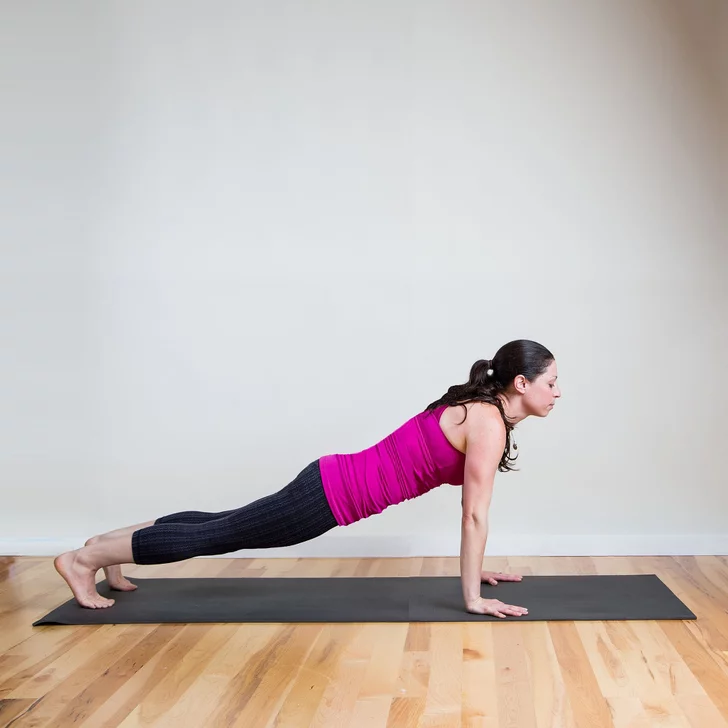
Conclusion: Is Calisthenics a Section of Yoga?
Now that you’ve explored ways to combine yoga and gymnastics let’s see why. Why do these two routines complement each other and bring new growth and depth to the original practice?
What yoga and calisthenics have in common is the approach or the way. For a complete beginner, any exercise may seem inaccessible or even futile from the outside. However, both areas require long-term perseverance and dedication.
Through the action of showing up daily, track your progress and discover some of your previously unknown physical abilities.

